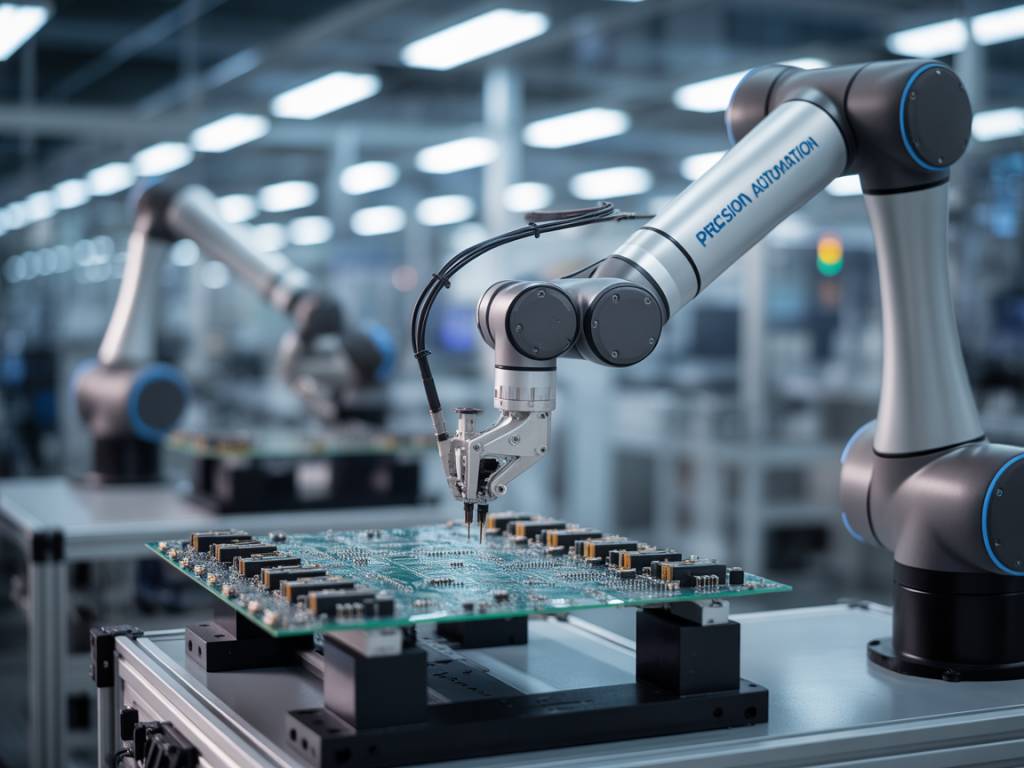In recent years, the frequency and sophistication of cyberattacks targeting industrial enterprises have surged. From global ransomware campaigns like WannaCry, which crippled production lines across Europe, to more targeted assaults against OT (Operational Technology) environments, the industrial world can no longer afford to treat cybersecurity as an afterthought. In fact, for many manufacturers and logistics players, cyber resilience has become critical not just for business continuity but for survival.
Why Cyber Resilience Matters in the Industrial Sector
Let’s set the record straight: cyber resilience is not just about building firewalls or running antivirus scans. It’s about ensuring that when—not if—a cyberattack reaches your systems, your organization can contain the damage, recover swiftly, and continue operating. For industrial enterprises that rely on interconnected supply chains, real-time data flows, and complex production cycles, the stakes are incredibly high.
The consequences of a successful cyberattack in this sector are particularly severe. We’re not just talking about lost data or ransomed files. We’re talking about production downtime, physical damage to machinery, safety hazards, delivery delays, and massive financial costs. According to a 2023 report by the European Union Agency for Cybersecurity, 42% of industrial companies experienced at least one cyber incident affecting OT environments over the past year.
So how can manufacturers, logistics providers, and industrial players bolster their cyber resilience? It starts with understanding the unique threats they face—and how to counter them effectively.
Understanding the Threat Landscape
Unlike traditional IT systems, industrial environments have to safeguard both IT and OT layers. That creates a larger and more complex attack surface. Attackers are increasingly leveraging techniques like:
- Phishing and spear-phishing: Still the most common vector. Employees are tricked into clicking malicious links or opening fake invoices, giving hackers a foothold in the network.
- Remote access exploitation: The rise of remote monitoring and maintenance has opened the doors to new vulnerabilities if improperly secured.
- Supply chain compromises: Attackers target suppliers or partners with weaker defenses to infiltrate the main operation.
- Malware targeting ICS/SCADA systems: These legacy systems often lack modern security features, making them attractive targets.
What makes these threats particularly insidious is their ability to fly under the radar. In 2022, a French automotive supplier suffered a three-week production halt after a backdoor in a third-party logistics software exposed plant control systems to ransomware. Despite having antivirus protection, the attack went undetected for days, underlining a painful lesson: preventive tools alone are not enough.
Building a Cyber-Resilient Strategy: Core Pillars
For industrial enterprises serious about resilience, here are the components that make a real difference:
1. Prioritize Risk-Based Asset Management
An effective cyber resilience strategy begins with full visibility into your digital and physical assets. What systems are critical to operations? Which machines are connected to the internet—and are they supposed to be? Surprisingly, many industrial plants still discover “shadow devices” several years into their digital transformation.
Implementing an asset inventory tool tailored for OT environments allows teams not only to map their infrastructure but to classify assets by criticality, current vulnerabilities, and exposure levels. This data-driven approach helps prioritize defenses where they matter most.
2. Segment Your Network Intelligently
Think of your industrial network like a ship. If water breaks into one compartment, the others should remain dry. That’s the principle behind network segmentation.
Rather than having IT and OT systems on the same flat network—a common but risky architecture—organizations should create segmented zones, enforced by firewalls and data diodes. Implementing the ISA/IEC 62443 standard is a good starting point, helping to define zones, conduits, and security levels tailored to industrial contexts.
3. Monitor in Real-Time—OT Included
Many industrial companies already use SIEMs (Security Information and Event Management) to detect suspicious activity in their IT networks. But when it comes to OT, monitoring is often neglected.
“In one food-processing plant we audited, there was a control system still using Windows XP without any logging or monitoring,” recalls Sophie Marechal, cybersecurity consultant at Atos. “They had no way of knowing if they’d been breached.”
Modern OT-aware monitoring tools can detect anomalies like unexpected PLC (Programmable Logic Controller) behavior or unauthorized firmware changes—signs of a potential lateral attack in progress.
4. Build a Culture of Cyber Preparedness
Cyber resilience doesn’t start in the server room—it starts with people. Operators, technicians, even warehouse staff all play a role in securing the system. Regular training on phishing identification, data hygiene, and escalation protocols can be surprisingly effective at reducing risk.
Leading manufacturers like Bosch and Schneider Electric now integrate cybersecurity red team exercises into their staff training programs. The goal? Simulate breaches, test incident response, and reinforce the importance of vigilance across all levels of the organization.
5. Plan for Recovery—Not Just Defense
No system is impermeable. That’s why resilience also means planning how to bounce back. Full system backups are essential—but they must be tested and they must remain impregnable (think: offline storage).
Incident Response Plans (IRPs) should detail who does what when an attack is detected. Which systems need to be isolated? What’s the route to communicate without email? How do you resume production safely?
After a ransomware incident shut down its packaging line, a mid-sized cosmetics manufacturer in Lyon realized its backup systems had been infected as well. Since then, it has adopted a 3-2-1 backup rule: three copies of all critical data, on two different media, with one stored offline. The result? A successful recovery during a second attempted breach just months later.
The Role of Legislation and Standards
Regulatory frameworks are catching up. The EU’s NIS2 Directive, which entered into force in 2023, tightens requirements on risk management, supply chain security, and incident reporting for businesses in critical sectors—including manufacturing and logistics.
Compliance isn’t just about avoiding fines: it promotes a baseline of resilience that benefits the entire ecosystem. Standards like ISO/IEC 27001 or the aforementioned IEC 62443 are increasingly becoming the minimum requirement in tenders and supplier contracts.
Partnering With the Right Experts
Many companies, especially SMEs, lack the internal capabilities to manage cyber resilience alone. Outsourcing to specialized MSSPs (Managed Security Service Providers) or consulting firms can close the gap—provided they understand the specificities of industrial systems.
“Cybersecurity for OT is a different animal,” says Karim Lahlou, CTO at CybelAngel. “You can’t just assume the same tools or playbooks as in the office environment. That’s where contextual awareness is critical.”
Selecting partners with field experience, sector expertise, and awareness of regulatory implications is essential—not just for protection, but for maintaining operational effectiveness during unexpected events.
Cyber Resilience Is a Strategic Advantage
Industrial enterprises that embrace cyber resilience don’t just reduce their exposure to threats—they gain a competitive edge. They ensure uninterrupted service to customers, demonstrate compliance to regulators, and inspire trust with partners.
In an increasingly volatile environment—where digitalization moves faster than risk awareness—being prepared for the unknown can be the best investment an industrial business can make. Because when the next cyber shock hits, those who planned ahead won’t just survive. They’ll lead.




